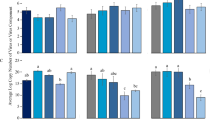Abstract
Basic studies carried out in India showed that the incubation period of TLCV in plants varied from 8 days in August to 90 days in winter. The acquisition threshold for the whitefly,Bemisia tabaci Gen., was 31 min; it resulted in 3% transmission. An acquisition access of 24 h for a female whitefly on a TLCV source resulted in 30% transmission. A minimum feeding period of 32 min was required by a viruliferous whitefly to cause infection on tomato test plants; this gave 4% transmission. With inoculation access of 24 h on tomato test plants, the transmission rose to 24%. Starving the vector for 1 h pre-acquisition or 1 h pre-inoculation resulted in higher levels of transmission of TLCV: 36 and 40%, respectively, compared with 20% for non-starved whiteflies. Extending the fasting period beyond 1 h resulted in a reduced transmission level. The whiteflies could acquire the virus from the cotyledonary leaves of an infected tomato plant, with a resultant 28% transmission; but infection did not occur when the whiteflies had an inoculation access to such leaves. Higher transmission rates were obtained when the younger leaves on tomato plants were used for acquisition and inoculation. Transmission was 8 and 38% when five whiteflies per plant were allowed 24 h of acquisition access to 11- and 2-month-old virus sources, respectively. After an acquisition access of 24 h to a TLCV source, male and female whiteflies retained their infectivity for 5 and 53 days, respectively. Nymphs can acquire and transmit the virus. When ten whiteflies of each sex were given 24 h of acquisition and of inoculation access, the subsequent transmission rate of males and females was 56 and 86%, respectively. This virus is not transovarially transmitted. Whitefly colonies raised on brinjal were more efficient (70 and 84% transmission in two experiments) than those raised on chilli, cotton, cowpea, tobacco or tomato.
Similar content being viewed by others
References
Bird, J. (1957) A whitefly transmitted mosaic ofJatropha gossypifolia L.Tech. Pap. Puerto Rico agric. Exp. Stn 22.
Butter, N.S. (1976) Studies on virus-vector relationships of tomato leafcurl virus and its vector,Bemisia tabaci Gen. Unpub. Ph.D. Thesis, Punjab Agric. Univ., Ludhiana, India.
Capoor, S.P. andVarma, P.M. (1950) Yellow-vein mosaic ofHibiscus esculentus L.Indian J. agric. Sci. 22: 217–223.
Cohen, S. andNitzany, F.E. (1966) Transmission and host range of the tomato yellow leafcurl virus.Phytopathology 56: 1127–1131.
Costa, A.S. (1955) Studies onAbutilon mosaic in Brazil.Phytopath. Z. 24: 97–112.
Costa, A.S. andBennett, C.W. (1950) Whitefly transmitted mosaic ofEuphorbia prunifolia.Phytopathology 40: 226–238.
Cowland, J.W. (1932) Report Gezera Ent. Sect.in: Rep. Gez. Agric. Res. Serv., Sudan.
Harpaz, I. andCohen, S. (1965) Semi-persistent relationship between cucumber veinyellowing virus (CVYV) and its vector the tobacco whitefly (Bemisia tabaci Gen.).Phytopath. Z. 54: 240–248.
Kirkpatrick, T.W. (1931) Further studies on leafcurl of cotton in the Sudan.Bull. ent. Res. 22: 323–363.
Laird, E.F. andDickson, R.C. (1959) Insect transmission of leaf crumple virus of cotton.Phytopathology 49: 324–327.
Nair, N.G. (1971) Studies on the yellow mosaic of Urd bean caused by moong bean yellow mosaic virus. Unpub. Ph.D. Thesis, UPAU, Pantnagar, India.
Nariani, T.K. (1968) Enation leafcurl of tomato.Pl. Dis. Reptr 5: 595–596.
Nene, Y.L. (1972) A survey of viral diseases of pulse crop in Uttar Pradesh.Research Bull. 4: 96–105.
Orlando, A. andSilberschmidt, K. (1946) Estabdos sobra a dissemnacao natural do virus da clorose infeciosa das mulvaceas (Abutilon virus 1, Baur) e a sua relacao com o insecto vectorBemisia tabaci (Gen.) (Homoptera- Aleyrodidae).Arq. Inst. Biol. Sao Paulo 17: 1–36.
Pruthi, H.S. andSamuel, C.K. (1939) Entomological investigations on the leafcurl of tobacco in northern India. III. The transmission of leafcurl by whitefly,Bemisia gossypieperda to tobacco, Sunhemp and a new alternate host of the leafcurl virus.Indian J. agric. Sci. 11: 389–409.
Pruthi, H.S. andSamuel, C.K. (1942) Entomological investigations on the leafcurl disease of tobacco in northern India. V. Biology and population of whitefly vector (B. tabaci Gen.) in relation to the incidence of the disease.Indian J. agric. Sci. 12: 35–57.
Rataul, H.S. andButter, N.S. (1977) Leafcurl virus of tomato.Indian Hort. 21(4): 15–16.
Rathi, Y.P.S. (1972) Mung bean yellow mosaic virus host range and relationship with vector,Bemisia tabaci. Ph.D. Thesis, G.B. Pant Univ. of Agriculture and Technology, Pantnagar, U.P., India.
Rathi, Y.P.S. andNene, Y.L. (1974) Sex ofBemisia tabaci Genn. in relation to the transmission of moong bean yellow mosaic virus.Acta Bot. Indica 2: 74–76.
Severin, H.H.P. (1931) Modes of anti-top transmission by the beet leafhopper,Eutettix tenellus (Baker).Hilgardia 6: 254–276.
Varma, P.M. (1952) Studies on the relationship of the bhindi yellow-vein mosaic virus and its vector the whitefly (Bemisia tabaci Gen.).Indian J. agric. Sci. 22: 75–91.
Varma, P.M. (1963) Transmission of plant viruses by whiteflies.Bull. Nat. Inst. Sci., India 24: 11–23.
Vasudeva, R.S. andSamraj, J. (1948) A leafcurl disease of tomato.Phytopathology 38: 364–369.
Verma, H.N., Srivastava, H.N. andMathur, A.K. (1975) A whitefly-transmitted yellow mosaic virus disease of tomato from India.Pl. Dis. Reptr 59: 494–498.
Author information
Authors and Affiliations
Rights and permissions
About this article
Cite this article
Butter, N.S., Rataul, H.S. The virus-vector relationship of the tomato leafcurl virus (TLCV) and its vector,Bemisia tabaci gennadius (Hemiptera: aleyrodidae). Phytoparasitica 5, 173–186 (1977). https://doi.org/10.1007/BF02980351
Received:
Issue Date:
DOI: https://doi.org/10.1007/BF02980351




